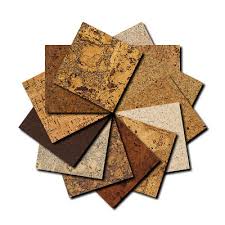EcoFriendly Flooring
I am asked all the time about EcoFriendly floor choices…People want to know how to discern what is truly Environmentally Friendly and what is not.
There are three ways to assess a material’s “greeness”…Ask the following ..How does it rate on being:
- Non Toxic
- Manufactured /Sourced with a low carbon footprint
- Durable
- A sustainable resource. Can it be easily replenished?
Durability: The following three resilient materials are comfortable underfoot. They are not as scratch resistant or as durable as hard materials, like tile and stone, but if cared for reasonably they will last a long time..
Carbon Footprint & Sustainability : The energy expenditure with hard flooring choices is the highest. They are costly energy wise to produce and to transport because of their weight. Resilient materials like Cork, Marmoleum and Bamboo are generally more easily replenished and take less energy to “harvest” and transport.
.
Toxicity: The glues that bind composite materials may be toxic and they will “off-gas for a considerable amount of time after production. I is the finish or “wear layer”on resilient flooring that is often most toxic. For your health look for finishes that have Low (VOCs) volatile organic compounds.
.
EcoFriendly Cork:
 Cork is a good choice if you use natural cork, and finish in place.
Cork is a good choice if you use natural cork, and finish in place.
Then you can control the type of finish and use a water based on toxic sealer. It is available in tiles that are glued in place and engineered planks in a click system which can be used as a “floating” floor.
It takes a tree 9 years to regrow the cork bark. Cork can be recycled when/if it needs to be replaced.
EcoFriendly Marmoleum:
Marmoleum is a good eco friendly choice for flooring & easy to maintain. It is produced using binders that are natural & non toxic.
The asthma association gives it their seal of approval.
It is made of small particles of cork bark, wood flour & jute and a good portion of recycled material. A fairly thin material it uses much less resources to produce.
PH balanced cleaners and sealers for finishing are best for maintaining it which are non toxic. This flooring can also be removed easily and recycled when a change is desired.
EcoFriendly Bamboo:
Bamboo has become a more popular material in recent years. The most important thing to know is the age of the material before it was harvested…and what chemicals were used in producing it.

It is 5-7 years old before it is at peak strength. Inexpensive bamboo is harvested early and scratches very easily.
Products will be FSC certified if they are a managed resource and produced sustainably.
If manufactured in the USA or Europe information is available about the binders and chemicals used in the manufacturing process.
Note that “carbonizing “ (baking the material to obtain the darker colours) affects the strength and durability of the fibre.
The link below has more information to read about this.
LEEDS is the premier green certification system to assess whether or not a material is eco-friendly or a builder is truly green conscious.

It is a complicated third party, well established system and you can learn more about it at the link following.
.
 Cork is a good choice if you use natural cork, and finish in place.
Cork is a good choice if you use natural cork, and finish in place.


 It is a complicated third party, well established system and you can learn more about it at the link following.
It is a complicated third party, well established system and you can learn more about it at the link following.